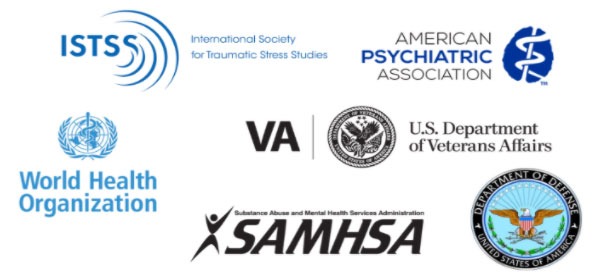
Eye Movement Desensitization and Reprocessing (EMDR) is a body-focused psychological intervention developed by Dr. Francine Shapiro in the late 1980’s, that was originally created to assist veterans suffering from Post Traumatic Stress Disorder for whom no other treatment had been effective. Dr. Shapiro’s technique involves brief focus on a specific aspect of a trauma memory coupled with a relaxation response generated in the brain and body through a series of eye movements. The technique allows the brain to develop new, positive neural pathways (called Adaptive Information Processing networks) while healing maladaptive nervous system responses. Our brains are hard wired to heal and adapt. Given the right environment of emotional safety and structure with EMDR, they do just that.
Since becoming a certified EMDR practitioner candidate in 2022, I’ve had the incredible opportunity to witness many clients making remarkable recoveries from trauma. This includes everything from single-incident traumas, like car accidents and sexual assault, to complex traumas stemming from childhood abuse or neglect. Both research and my own clinical experience have shown me just how effective EMDR can be – not only in easing trauma-related symptoms like nightmares, intrusive thoughts, and flashbacks but also in helping to reduce a variety of other psychological symptoms related to depression, intense anxiety (both generalized and social), anger outbursts, feelings of grief and loss, and more.
What makes EMDR unique from other therapeutic approaches is that it does not require extensive revisiting of the details of the trauma. It does not require the client to talk at length about the trauma or the therapist to interpret what the client is experiencing. In EMDR therapy, the therapist is not the one who is deemed the expert healer in the room! The client’s own experiences and spontaneous insights revealed during EMDR reprocessing are seen as the expert healers.
As we heal our relationship with our own Self, yet another positive outcome with EMDR is improved intimate partnerships and relationships of all kinds with family, friends, neighbors, and colleagues. EMDR seems to open the door to a greater enjoyment of life and an enhanced capacity to lay down the burden of emotional pain from the past and live more freely in the present moment. It is truly inspiring to see the positive changes in my clients’ lives!
Below is some additional information taken from the EMDR International Association (EMDRIA) website to help you determine if EMDR may be a useful intervention to explore in your own therapy.
What is EMDR Therapy?
EMDR is a structured therapy that encourages the client to focus briefly on the trauma memory while simultaneously experiencing bilateral stimulation (typically eye movements), which is associated with a reduction in the vividness and emotion associated with the trauma memories. Eye Movement Desensitization and Reprocessing (EMDR) therapy is an extensively researched, effective psychotherapy method proven to help people recover from trauma and PTSD symptoms. Ongoing research supports positive clinical outcomes, showing EMDR therapy as a helpful treatment for disorders such as anxiety, depression, OCD, chronic pain, addictions, and other distressing life experiences (Maxfield, 2019). EMDR therapy has even been superior to Prozac in trauma treatment (Van der Kolk et al., 2007). Shapiro and Forrest (2016) share that EMDR therapists in 130 countries have successfully treated millions.
The American Psychiatric Association, the American Psychological Association, the International Society for Traumatic Stress Studies, the National Alliance on Mental Illness, the Substance Abuse and Mental Health Services Administration, the U.K. National Institute for Health and Care Excellence, the U.S. Dept. of Veterans Affairs/Dept. of Defense, The Cochrane Database of Systematic Reviews, and the World Health Organization among many other national and international organizations recognize EMDR therapy as an effective treatment. More specific information on treatment guidelines can be found on our EMDR Treatment Guidelines page.
References
Maxfield, L. (2019). A clinician’s guide to the efficacy of EMDR therapy. Journal of EMDR Practice and Research [Editorial], 13(4), 239-246.
Shapiro, F., & Forrest, M. S. (2016). EMDR: The breakthrough therapy for overcoming anxiety, stress, and trauma. Hachette UK
Van der Kolk, B.A., Spinazzola, J., Blaustein, M.E., Hopper, J.W., Hopper, E.K., Korn, D. L., & Simpson, W.B. (2007). A randomized clinical trial of eye movement desensitization and reprocessing (EMDR), fluoxetine, and pill placebo in the treatment of posttraumatic stress disorder: treatment effects and long-term maintenance. Journal of Clinical Psychiatry, 68(1), 37-46.

How is EMDR therapy different from other therapies?
EMDR therapy does not require talking in detail about the distressing issue or completing homework between sessions. EMDR therapy, rather than focusing on changing the emotions, thoughts, or behaviors resulting from the distressing issue, allows the brain to resume its natural healing process.
EMDR therapy is designed to resolve unprocessed traumatic memories in the brain. For many clients, EMDR therapy can be completed in fewer sessions than other psychotherapies.

How does EMDR therapy affect the brain?
Our brains have a natural way to recover from traumatic memories and events. This process involves communication between the amygdala (the part of the brain that gives an alarm signal for stressful events), the hippocampus (which assists with learning, including memories about safety and danger), and the prefrontal cortex (which analyzes and controls behavior and emotion). Many times, traumatic experiences can be managed and resolved spontaneously without special intervention or treatment. However, some traumatic experiences may require additional help to create new neural pathways in the brain that allow us to integrate the experience in a more balanced way.
Stress responses are part of our natural fight, flight, freeze, or fawn survival instincts. When distress from a disturbing event remains, the upsetting images, thoughts, emotions, and body sensations may create an overwhelming feeling of being back in that moment, or of being “frozen in time.” EMDR therapy helps the brain process these memories, and allows normal healing to resume. EMDR treatment does not erase any aspect of the memory. The experience is still remembered, but the nervous system’s fight, flight, freeze, or fawn response from the original event is resolved.

Who can benefit from EMDR therapy?
EMDR therapy helps children and adults of all ages. The use of EMDR with Couples is also gaining attention, especially when nervous system response patterns established in childhood as a mechanism to survive abuse or neglect or other traumatic experiences, are driving the behavior in the adult in ways that no longer serve them. Therapists use EMDR therapy to address a wide range of challenges:
- Anxiety, panic attacks, and phobias
- Chronic Illness and medical issues
- Depression and bipolar disorders
- Dissociative disorders
- Eating disorders
- Grief and loss
- Pain
- Performance anxiety
- Personality disorders
- Post-Traumatic Stress Disorder (PTSD) and other trauma and stress-related issues
- Sexual assault
- Sleep disturbance
- Substance abuse and addiction
- Violence and abuse

Can EMDR therapy be done without a trained EMDR therapist?
EMDR therapy is a mental health intervention. As such, it should only be offered by properly trained and licensed mental health clinicians. EMDRIA™ does not condone or support indiscriminate uses of EMDR therapy such as “do-it-yourself” virtual therapy.

How did EMDR therapy start?
In the late 1980s, Francine Shapiro, Ph.D., discovered a connection between eye movement and persistent upsetting memories. With this personal insight, she began a lifelong study and development of Eye Movement Desensitization and Reprocessing (EMDR) therapy.
Over the years, and in the face of initial skepticism, Dr. Shapiro’s work developed from a hypothesis to a formal therapy process. EMDR therapy has been demonstrated to be effective for treating trauma in randomized clinical trials, case studies, and millions of clinical hours treating trauma and trauma-related disorders across the globe. The American Psychiatric Association, the U.S. Department of Veterans Affairs (USVA) and Department of Defense (USDOD), the United Kingdom’s National Institute for Health Care and Excellence (NICE), and the World Health Organization (WHO), multiple global organizations now recognize the effectiveness of EMDR therapy that Dr. Shapiro developed.
Most recently, the public acceptance of EMDR therapy was illustrated when Prince Harry reported that he engaged in EMDR therapy to treat trauma from his childhood. Sandra Bullock also opened up about using EMDR therapy to treat trauma from an at-home break-in.
Dr. Shapiro encouraged the foundation of EMDRIA™, which comprises more than 15,000 mental health professionals who use EMDR therapy in their clinical practice to treat many conditions that impact mental health. Dr. Shapiro died in 2019, but her legacy of trauma-informed mental health care lives on in the EMDR therapists, researchers, and patients for whom EMDR therapy heals.
Experiencing EMDR Therapy
After the therapist and client agree that EMDR therapy is a good fit, the client will work through the eight phases of EMDR therapy with their therapist.
Attention will be given to a negative image, belief, emotion, and body sensation related to this event, and then to a positive belief that would indicate the issue was resolved.
A typical EMDR therapy session lasts from 60-90 minutes. EMDR therapy may be used within a standard talking therapy, as an adjunctive therapy with a separate therapist, or as a treatment all by itself.
Learn more about Experiencing EMDR Therapy
EMDR Therapy is a Recognized Effective Treatment for PTSD
Anyone can experience intense trauma. EMDR therapy is widely considered one of the best treatments for post traumatic stress disorder (PTSD) and it has been endorsed as an effective therapy by many organizations.
Learn more about EMDR for PTSD

Need Immediate Assistance?
Click here to find help now from a directory of 24-hour hotlines and resources for suicide prevention and support. If the situation is potentially life-threatening, get immediate emergency assistance by calling 988.
Source: EMDRIA (EMDR International Association https://www.emdria.org/about-emdr-therapy/
